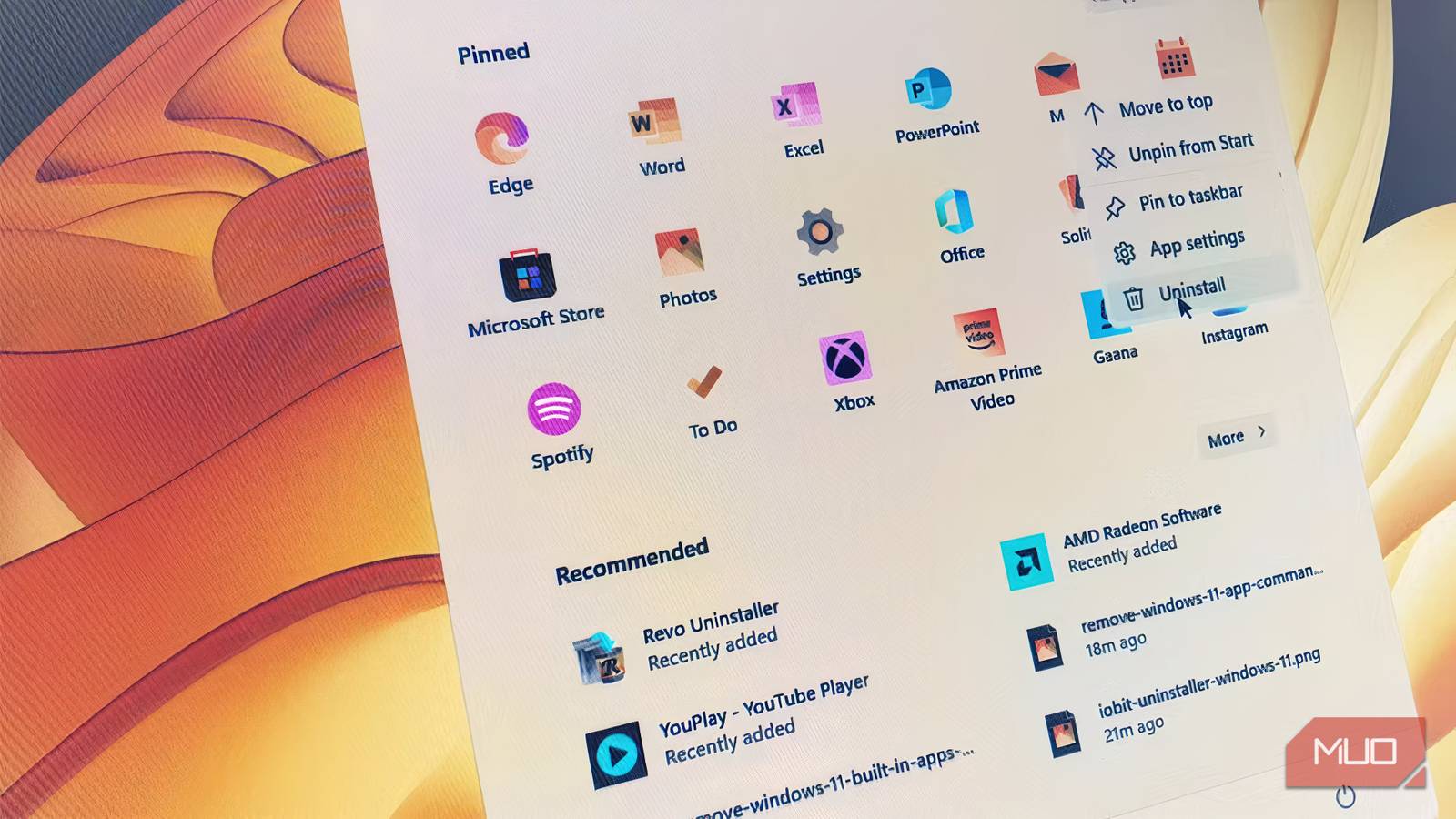The lives of IT managers, DevOps pros, and business process analysts are…chaotic.
One minute, you’re fixing a broken data pipeline; the next, you’re chasing a malfunctioning automation at 2 AM. And nothing says ‘fun’ like troubleshooting integration failures right before deadlines.
When smooth operation is at stake, you need more than just automation. You need coordination.
Workflow orchestration tools help you define, schedule, and monitor workflows across teams and systems, ensuring even the most complex workflows run with minimal manual intervention.
To help you choose wisely, we’ve rounded up the top workflow orchestration platforms and what makes each one stand out. Let’s begin!
10 Best Workflow Orchestration Tools for Efficiency
Want a quick comparison of all the tools? Here’s an overview before we discuss them in detail.
| Tool | Key features | Best for | Pricing* |
| All-in-one platform for task management, automation, real-time collaboration, and AI suggestions | Cross-functional teams, startups, and growing businesses that manage complex projects | Free plan available; customizations available for enterprises | |
| Apache Airflow | Python-based workflows using DAGs with real-time monitoring and integration with cloud/data tools | Data engineering and DevOps teams that manage complex pipelines and ML workflows | Free forever |
| AWS Step Functions | Provides a visual builder for orchestrating serverless workflows with built-in error handling and native AWS integration | Teams building and managing serverless or microservice architectures on AWS | Free; custom pricing |
| Microsoft Power Automate | Easy business processes automation across Microsoft 365 with AI-driven flows and robotic process automation for legacy systems | Microsoft-centric businesses that require low-code automation across departments | Free; paid plans from $15/month per user |
| Nected | A low-code platform to build logic-based workflows with real-time orchestration, seamless API connections, and intuitive UI | Business users and developers seeking customizable, logic-driven workflow automation | Free; custom pricing |
| Prefect | Python-native tool that supports event-driven workflows without DAGs, offering flexibility, caching, and real-time triggers | Data scientists and engineers looking for scalable Python-based workflows | Free; custom pricing |
| Google Workflows | Orchestrates cloud-native services in a serverless environment with real-time triggers | Teams working in the Google Cloud ecosystem to build event-driven or API-based workflows | Free; custom pricing |
| Azure Data Factory | Data integration with a low-code interface, hybrid data handling, and real-time pipeline monitoring | Enterprises managing large-scale data integrations | Custom pricing |
| Control-M | Complex workflow management across hybrid environments with predictive analytics, CI/CD integration, and secure data transfers | Enterprises handling mission-critical workloads requiring governance and automation | Custom pricing |
| Flyte | Scales machine learning workflows with dynamic execution, parallel task handling, and strong version control | Data and ML engineering teams managing big data science projects and workflows | Custom pricing |
Before getting to the list, let’s discuss the key features to consider when choosing the right IT automation software.
- Scalability: Look for a scalable architecture that adapts to your business needs, whether you’re managing a handful of workflows or orchestrating enterprise-wide automation
- User-friendliness: Select workflow orchestration software with an intuitive interface, drag-and-drop workflow builders, and seamless navigation, so that no advanced technical expertise is required to use it
- Workflow monitoring: Stay ahead of failures with real-time monitoring and alerts. A good workflow management system should offer detailed logs, visual workflow performance tracking, and proactive notifications so you can troubleshoot issues before they snowball
- Automation features: Opt for a workflow automation platform that minimizes manual intervention. Look for features like dynamic mapping, automated retries, and dependency management to keep workflows running smoothly
- Integrations: Enable seamless data movement by choosing a tool that integrates effortlessly with cloud services, data lakes, databases, and enterprise applications
The right tool makes working a breeze and improves productivity across the company. You’ll wonder how you ever managed without it!
💡 Pro Tip: Don’t just evaluate a tool based on your current needs. Consider your organization’s three-year roadmap when selecting a workflow software tool.
How we review software at
Our editorial team follows a transparent, research-backed, and vendor-neutral process, so you can trust that our recommendations are based on real product value.
Here’s a detailed rundown of how we review software at .
Now that you know your priorities, let’s explore the cream of the crop!
1. (Best for streamlining workflows with automation and real-time collaboration)
Work today is broken. Our projects, knowledge, and communication are scattered across disconnected tools that slow us down.
If you’re building complex workflows, is the one tool you’ll wish you had started using sooner.
As the everything app for work, combines projects, knowledge, and chat in one place—all powered by AI that helps you work faster and smarter.
Let’s say your DevOps team is managing a major deployment. There are server upgrades to handle, testing pipelines to monitor, release notes to update… basically, a ton of moving parts to take care of. The first step is to break the entire mammoth project down into smaller, trackable tasks.
Tasks make this simple. Use them to create detailed tasks and subtasks, assign them to the right people, set deadlines, manage priorities, and even link dependencies.
Launching a new internal tool? Break it down into: setting up the dev environment, finalizing UI/UX, and rolling out v1.0. Depending on the urgency of the tasks, set priorities like Urgent, High, Normal, and Low. This ensures that every step flows in the right order.


What about the times you need to add more context to tasks, such as sprint numbers or approval dates? Custom Fields eliminate the need to share multiple spreadsheets and random notes by helping you add the information your team needs right within the task.
Additionally, Custom Task Statuses help your team track the stage at which each task is, keeping you and your team updated on the overall project progress.
Once you have assigned the tasks, how do you view them? We say, however you like to! ’s 15+ Views are customizable and let you visualize workflows your way.
Whether you want to use the List View for a perfectly structured task list or go for the Gantt View to view project timelines and dependencies, offers it all!


Once tasks are rolling, you’ll want to ensure no one is stuck with questions. Instead of relying on scattered communication through different channels, use Chat and Assigned Comments to centralize discussions.
Get real-time updates, @mention teammates, and resolve blockers directly within the task or in a centralized chat channel connected to your task list and project space. This helps you make your team communication more efficient and prevent the top enemy of productivity—context-switching.


📮 Insight: Context-switching is silently eating away at your team’s productivity. Our research shows that 42% of disruptions at work come from juggling platforms, managing emails, and jumping between meetings. What if you could eliminate these costly interruptions?
unites your workflows (and chat) under a single, streamlined platform. Launch and manage your tasks from across chat, docs, whiteboards, and more—while AI-powered features keep the context connected, searchable, and manageable!
One of the main purposes of workflow management is to save time on repetitive tasks.
Automations help you eliminate manual steps, such as assigning tasks when statuses change or sending reminders before due dates, with custom triggers that execute actions independently.


👀 Did You Know? discovered that 21% of people say more than 80% of their workday is spent on repetitive tasks. And another 20% say repetitive tasks consume at least 40% of their day. That’s nearly half of the workweek (41%) devoted to tasks that don’t require much strategic thinking or creativity (like follow-up emails 👀).
Imagine a workflow where tickets are assigned, approvals are requested, and reports are generated—without you lifting a finger. That’s automation done right.
Want to take it a step further? Brain helps you prioritize work based on deadlines, workload, and dependencies. The AI assistant, built into your workspace, even suggests ways to optimize processes by spotting delays or overlaps.


And when you need tasks to be completed autonomously, Autopilot Agents are a huge help. They can help you summarize updates in a team standup, answer repetitive questions in chat, and generate daily or weekly task reports, so you can focus on moving the needle.


We did say that does it all, didn’t we?
From real-time collaboration to powerful automation, removes friction from workflows so you can focus on what matters—delivering results.
best features
- Organize workflows with tasks, subtasks, priorities, and dependencies to ensure smooth execution
- Choose from 100+ pre-built templates or build your own automation recipes and examples with Automations
- Collaborate in real time and visualize your brainstorming sessions with Whiteboards and Mind Maps
- Integrate 1000+ third-party apps like Zoom, Teams, Slack, and more to connect your entire workspace
- Manage workflow performance by tracking KPIs, monitoring team workloads, or identifying bottlenecks with Dashboards
limitations
- Comes with a learning curve in the beginning
- The mobile app is yet to be as feature-rich as the desktop version
pricing
free forever
Best for personal use
Free Free
Key Features:
unlimited
Best for small teams
$7 $10
Everything in Free Forever plus:
business
Best for mid-sized teams
$12 $19
Everything in Unlimited, plus:
enterprise
Best for many large teams
Get a custom demo and see how aligns with your goals.
Everything in Business, plus:
* Prices when billed annually
The world’s most complete work AI, starting at $9 per month
Brain is a no Brainer. One AI to manage your work, at a fraction of the cost.
Try for free
ratings and reviews
- G2: 4.7/5 (10,000+ reviews)
- Capterra: 4.6/5 (4,000+ reviews)
What real-life users are saying about
A Capterra user says:
📮 Insight: 64% of employees occasionally or frequently work outside their scheduled hours, with 24% logging extra hours most days! That’s not flexibility—that’s never-ending work. 😵💫
Tasks help you break big goals into smaller, manageable steps, so you always know what to tackle next—without the overwhelm. Just ask ’s AI to generate subtasks, add checklists, and map dependencies to stay organized and in control. Meanwhile, Automations streamline routine work by handling updates, assignments, and reminders—so you can spend less time on busy work and more time on what matters. 🚀
💫 Real Results: Pigment improved team communication efficiency by 20% with —keeping teams better connected and aligned.
2. Apache Airflow (Best for Python-based dynamic workflow orchestration)
If you’re an IT pro dealing with complex data pipelines, Apache Airflow can make your life easier. Developed initially at Airbnb in 2014, Apache Airflow programmatically schedules, monitors, and manages workflows with dynamic control.
With a Python-first approach, a directed acyclic graphs (DAG)-based execution, and easy integrations, it’s ideal for orchestrating scalable data pipelines, machine learning workflows, and business automation.
Apache Airflow best features
- Define workflows as code with Python, automate complex dependencies, and customize execution logic effortlessly
- Distribute tasks across multiple worker nodes, manage high-concurrency workflows, and ensure fault tolerance
- Connect with AWS, Google Cloud, MySQL, Apache Hive, and other third-party platforms for better automation
- Track task execution, troubleshoot failures with detailed logs, and visualize DAGs in real-time
Apache Airflow limitations
- Requires Python expertise to define workflows effectively
- Lacks support for real-time workflow orchestration
Apache Airflow pricing
Apache Airflow ratings and reviews
- G2: 4.3/5 (85+ reviews)
- Capterra: Not enough reviews
What real-life users are saying about Apache Airflow
A G2 user says:
3. AWS Step Functions (Best for visual workflow orchestration of serverless applications)
Amazon Web Services (AWS) Step Functions is a serverless workflow orchestration platform designed for modern applications. With its visual-first approach, it simplifies complex processes, whether you’re automating data pipelines, managing microservices, or orchestrating machine learning workflows..
Its built-in error handling, scalability, and seamless integration with over 220 AWS services enable teams to focus on business logic without worrying about infrastructure.
AWS Step Functions best features
- Build, modify, and debug state machines using an intuitive drag-and-drop editor
- Run long-duration workflows (Standard) or handle high-frequency tasks (Express) without infrastructure management
- Connect with Lambda, S3, DynamoDB, SageMaker, and external APIs for end-to-end automation
- Enjoy secure data collaboration with multiple parties and analyze shared datasets without exposing raw data with AWS Clean Rooms
AWS Step Functions limitations
- Limited flexibility for non-AWS integrations
- The pricing might get expensive as workflows grow more complex
AWS Step Functions pricing
- Free forever
- Custom pricing
AWS Step Functions ratings and reviews
- G2: 4.2/5 (40+ reviews)
- Capterra: Not enough reviews
What real-life users are saying about AWS Step Functions
A G2 review shares:
4. Microsoft Power Automate (Best for Microsoft-centric workflow automation)
If your business runs on Microsoft 365, Power Automate can be your automation sidekick. It automates repetitive tasks across Outlook, Teams, SharePoint, and Excel, cutting down manual effort and errors.
With AI Builder and robotic process automation (RPA), you can build smart workflows and automate legacy systems without coding. Plus, with a vast library of connectors that showcase numerous workflow automation examples, you can automatically save email attachments, send alerts, and more to improve your workflow.
Microsoft Power Automate best features
- Automate tasks across Microsoft 365 apps like Excel, OneDrive, and Teams with native support
- Use AI workflow automation to process data, automate decisions, and enhance workflows with AI Builder
- Automate legacy systems and desktop applications with attended and unattended RPA
- Speed up automation with 1,000+ pre-built templates and custom integration options
Microsoft Power Automate limitations
- Complex automation requires deeper expertise
- Advanced RPA features are only available in paid plans
Microsoft Power Automate pricing
- Power Automate Premium: $15/month per user
- Power Automate Process: $150/month per user
- Power Automate Hosted Process: $215/month per user
Microsoft Power Automate ratings and reviews
- G2: 4.5/5 (550+ reviews)
- Capterra: 4.4/5 (200+ reviews)
What real-life users are saying about Microsoft Power Automate
A Capterra user says:
5. Nected (Best for low-code rule-based workflow orchestration)
If you need a powerful yet flexible workflow automation tool that blends decision logic, API management, and process orchestration, Nected is a game-changer.
The best part is that it suits technical and non-technical users and simplifies complex workflows. This enables easy data processing and intelligent decision-making without heavy coding.
Nected best features
- Eliminate manual tasks by organizing multi-step processes from start to finish
- Use decision tables, rule chains, and conditional logic to drive intelligent automation
- Build workflows easily with drag-and-drop tools while allowing developers to customize further
- Connect to databases and third-party APIs for smooth, real-time data exchange
Nected limitations
- Advanced customizations may require technical assistance
- Older systems may need extra setup for smooth adoption
Nected pricing
- Free forever
- Start-Ups: Custom pricing
- Growth: Custom pricing
- Custom: Custom pricing
Nected ratings and reviews
- G2: 4.7/5 (20+ reviews)
- Capterra: Not enough reviews
What real-life users are saying about Nected
A G2 user says:
6. Prefect (Best for Python-based, event-driven workflow orchestration)
Prefect is yet another Python-native workflow software solution. It turns your Python code into resilient, production-ready workflows without the complexity of DAGs.
It handles everything from managing data pipelines, machine learning workflows, and cloud-based automation while ensuring scalability and reliability. Because of the Python-first approach, Prefect is very popular among data scientists.
Prefect best features
- Define tasks using simple decorators, eliminating the need for rigid DAG structures
- Execute workflows flexibly with dynamic task handling and real-time event triggers
- Track tasks, enable automatic retries, and cache results for improved efficiency
- Trigger workflows based on real-time events, like launching a data pipeline when a file reaches your Google Cloud Storage
Prefect limitations
- Limited support for non-Python workflows
- Some automation and role-based controls are only available in paid versions
Prefect pricing
- Free forever
- Pro: Custom pricing
- Enterprise: Custom pricing
Prefect ratings and reviews
- G2: 4.5/5 (120+ reviews)
- Capterra: Not enough reviews
What real-life users are saying about Prefect
A G2 user says:
7. Google Cloud Workflows (Best for serverless workflows in the Google Cloud ecosystem)
If you’re looking for a workflow orchestration tool that effortlessly connects Google Cloud services, APIs, and event-driven processes, Google Workflows is a top choice.
Its fully managed, serverless architecture eliminates infrastructure concerns, allowing teams to focus on building and automating workflows without worrying about scaling.
Google Cloud Workflows best features
- Scale workflows dynamically and pay only for the number of workflow executions and resources consumed, without any fixed fees
- Connect services like BigQuery, Pub/Sub, and Cloud Storage with built-in authentication
- Trigger workflows in real time based on Cloud Storage uploads, Pub/Sub messages, or HTTP requests
- Ensure smooth operations with stateful workflows, automatic retries, and fault tolerance
Google Cloud Workflows limitations
- Limited integrations outside the Google Cloud ecosystem
- Workflows must be defined in YAML or JSON, which can be complex for large processes
Google Cloud Workflows pricing
- Free forever
- Custom pricing
Google Cloud Workflows ratings and reviews
- G2: Not enough reviews
- Capterra: Not enough reviews
What real-life users are saying about Google Cloud Workflows
A G2 user shares:
8. Azure Data Factory (Best for enterprise-scale hybrid data integration)
Azure Data Factory (ADF) is the perfect choice for dealing with large-scale data integration across cloud, on-premises, or hybrid environments, especially within the Microsoft ecosystem.
This enterprise workflow management software allows time-based scheduling and event triggers. It simplifies data movement with over 90 pre-built connectors. Its low-code interface allows anyone to build complex pipelines without requiring deep programming expertise.
Azure Data Factory best features
- Integrate data from multiple sources, including Amazon Redshift, Oracle, and Salesforce
- Simplify complex transformations with a low-code drag-and-drop interface
- Use real-time monitoring dashboards to track pipeline performance
- Access a fully serverless architecture that scales automatically based on workload demands
Azure Data Factory limitations
- Limited non-Microsoft integrations
- Custom transformations and hybrid setups require technical expertise
Azure Data Factory pricing
Azure Data Factory ratings and reviews
- G2: 4.6/5 (80+ reviews)
- Capterra: Not enough reviews
What real-life users are saying about Azure Data Factory
A Reddit review shares:
9. Control-M (Best for enterprise-grade workflow orchestration)
Control-M by BMC Software is a powerful workflow orchestration tool designed to automate complex data pipelines, application workflows, and file transfers across hybrid and multi-cloud environments.
It’s ideal for enterprises managing mission-critical workloads. Control-M enhances efficiency with automation, predictive analytics, and DevOps-friendly features.
Control-M best features
- Connect on-premises and cloud environments effortlessly with built-in integrations for AWS, Azure, and Google Cloud
- Embed orchestration into CI/CD pipelines using JSON or Python for streamlined versioning and testing
- Use predictive analytics to identify potential delays and trigger automated alerts before issues arise
- Integrate file movement into workflows while maintaining security, compliance, and real-time tracking
Control-M limitations
- It might be expensive for smaller teams
- Customization and troubleshooting might require expert assistance
Control-M pricing
Control-M ratings and reviews
- G2: 4.4/5 (50+ reviews)
- Capterra: Not enough reviews
What real-life users are saying about Control-M
A G2 user says:
10. Flyte (Best for data and machine learning projects)
Flyte is built for heavy-duty data and machine learning (ML) workflows. It’s all about bridging the gap between scalability and ease of use, letting you build dynamic, production-grade pipelines.
It simplifies complex processes with dynamic workflows, strong data validation, and multi-language support while ensuring reproducibility across distributed environments.
Flyte best features
- Use the @dynamic decorator to create workflows that adjust at runtime, perfect for hyperparameter tuning and model evaluation
- Roll back to the previous version of workflows as needed for debugging or experimentation
- Break down large computations using map tasks for efficient parallelization in ML and big data workflows
- Auto-retry failed tasks, cache results, and enable one-click recovery to reduce downtime
Flyte limitations
- Advanced features require additional expertise
- It offers fewer integrations compared to its competitors
Flyte pricing
Flyte ratings and reviews
- G2: Not enough reviews
- Capterra: Not enough reviews
Build Workflows that Click with
Workflow orchestration tools handle it all. From managing complex data pipelines and coordinating tasks across systems to automating workflows and strengthening team communication, they ensure error-free execution from start to finish. While some tools cater to niche needs, is the ultimate all-rounder. It’s flexible, intuitive, and packed with automation and agentic options.
Whether you’re managing deadlines and workflows or just trying to survive Monday, keeps your team in sync without breaking a sweat.
Because why work harder when you can work smarter? Sign up for a free account today!


Everything you need to stay organized and get work done.












